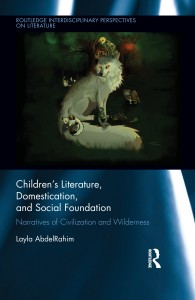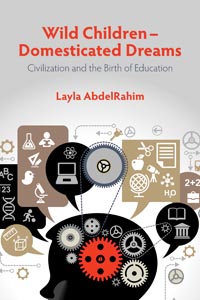I am an independent scholar and author with no institutional funding. Please, consider supporting me on Patreon so I can continue to do the work. Thank you!
Poor Liza
based on a novella by Nikolay Karamzin – For an in-depth analysis, see my book “Children’s Literature, Domestication, and Social Foundation: Narratives of Civilization and Wilderness” (Routledge 2015).
Every society produces its own version of prescriptions for what to do and taboos, of explanations about how the world functions and of natural and social rules. In the end, every aspect of our experience is connected to how we justify our actions and how we interpret the “law”. Prescriptions and taboos for gender relations are thus intertwined with the control of capital flow and the production of social and economic culture that regulates that flow. Punishment for breaking the rules of the status quo vary from one group to another according to the group’s interpretation of what constitutes undesirable consequences, because it is the feared outcome that is supposed to act as a deterrent of breaking natural or social law. The various versions of Romeo and Juliet reveal what is truly valued and what people fear to lose.
For example, Arabic sources tell a story that occurred in the 7th century A.D., during the Umayyad Caliphate, of a passionate young man by the name of Qays who fell in love with a beautiful young woman by the name of Layla. When her father refuses her hand in marriage and forces Layla to marry another man, the most terrible thing happens to Qays: he loses his reason and can no longer write poetry. This, for the Arab culture, is worse than death. Since insanity is a social category, Qays steps outside the boundaries of society and goes to live in the desert where later his body was found on the burial place of an unknown woman, possibly his beloved who died shortly after her forced marriage to another man.
The European rendering of the tragedy of socially forbidden union of two lovers focuses on an ending that is deemed most terrible by the standards of European society and here we see the difference that marks European and Middle Eastern values. For the society of Romeo and Juliet the most terrible outcome is losing life itself. Hence, as punishment for desiring a union that would lead to the families’ sharing their capital and resources with a competing clan, the lovers must die.
Relationships between individuals and social genders have preoccupied writers for epochs. Ophelia drowns in the face of her lover’s obsessions, Madame Bovary’s mistaken greed for things and indulgence in the abusive and manipulated desires for “high class” living spell out her death. Tolstoy’s Anna Karenina throws herself under the train – a potent symbol of fatal technology – when alienation from nature and immersion in the bourgeois values become unbearable. Adolphe Adams’ ballet Giselle is also a version of the theme.
Karamzin’s Poor Liza is a precursor of Giselle, of Tolstoy’s Anna Karenina and Flaubert’s Madame Bovary. He wrote the story in 1792 contextualising his concept of conservative and hierarchical social relations against which Leo Tolstoy later rebelled. Poor Liza was born into a wealthy peasant family, the author tells us, because her father worked hard. The link between hard work and wealth is of course pure propaganda, because as history shows, those who work the hardest live and die the poorest. Karamzin’s portrayal of Liza, however, starts with contextualising the relations of exploitation between the city of Moscow and the countryside. Money is the first touch that Liza receives from the stranger when she sells him flowers. But unlike the versions of Qays and Layla or Romeo and Juliet, where the lovers could not overcome the weight of the distribution of wealth from outside the realm of their will, in Karamzin’s version of unhappy love, it is the personal weakness in the face of social violence that brings the tragic end. Liza’s tragedy is that she kills herself, like Ophelia, she drowns in the river, while Erast lives with his weakness and choice. He chose to go to war. War is violence about capital, power, and resources and in the army he lost all his wealth. Because of that, he decides to marry a rich widow even though his heart aches for Liza. Living with this choice, according to the author, is the worst punishment of all.
The film is a tableau of events, moments, and pain.
Part 1:
Part 2:
Filed in: Uncategorized.










I like this videos, and especially the story of Bednaya Liza – My favorite story that I’ve read!
Just read Karamazin’s ‘Poor Liza’ and enjoyed reading your comments here. Different perspectives help in understanding. The animated videos are quite good. Love the sound of the horse and buggy.
Ooops…Karamzin (wrote his name wrong in above post).
Karamzin’s ‘Julia’ is good too.
Finally figured out Karamzin is showing the harm that can be done through religious mystery. Chateaubriand’s ‘Atalya’ does too. Both women were harmed due to misunderstanding religion (as understanding is at times not revealed or discovered until too late). Interesting.
buy proxies socks
I found a great…
… [Trackback]
[…] Find More Informations here: laylaonthe.net/poor-liza/ […]